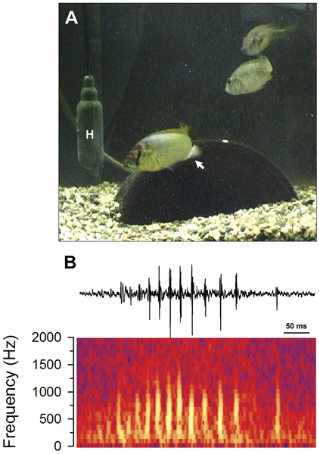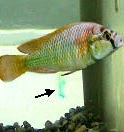Research | Model System: Astatotilapia burtoni
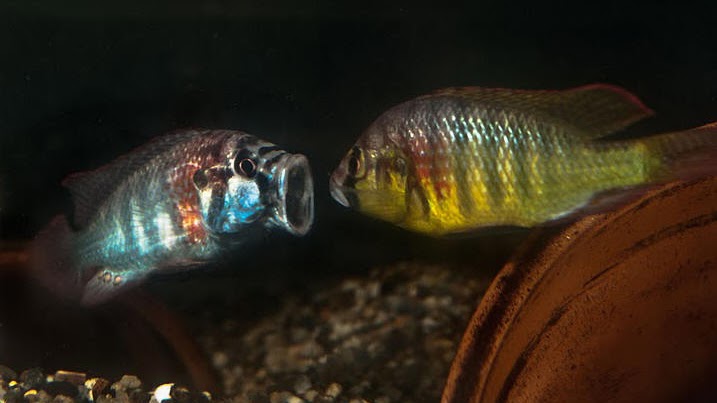

Our model organism is the African cichlid fish Astatotilapia burtoni (Burton's mouthbrooder). This species naturally lives in Lake Tanganyika; the largest,
oldest, and deepest lake in the rift valley system of Eastern Africa. We use a laboratory-bred
population derived from individuals caught in shallow shore pools and river estuaries
of Lake Tanganyika. Males of this species exist in two different types. Dominant,
or territorial, males are brightly colored (yellow or blue) with a dark stripe through
the eye (eye-bar), a black spot on the tip of the gill cover, and a red humeral patch
just behind the gills. These dominant males are very active, aggressively defend their
territories from other males, and spend a lot of time trying to entice females into
their spawning areas to mate. Subordinate, or non-territorial, males are more drab
colored similar to females, do not hold a territory or typically reproduce, and spend
their time shoaling with females and fleeing from aggressive attacks of dominant males.
Remarkably, however, males can switch back and forth between dominant and subordinate
phenotypes depending on the composition of the social environment. If a dominant male
disappears from a territory, within minutes, a subordinate male will quickly take
it over and rise in social rank. This social ascent is associated with a suite of
rapid behavioral, physiological, and molecular changes that occur from the brain down
to the testes, allowing this male to adapt to his new role as a reproductively active
territory holder. We can experimentally control these changes in rank in both directions
to study how social transitions influence behavior, the brain, and the function of
the reproductive system.
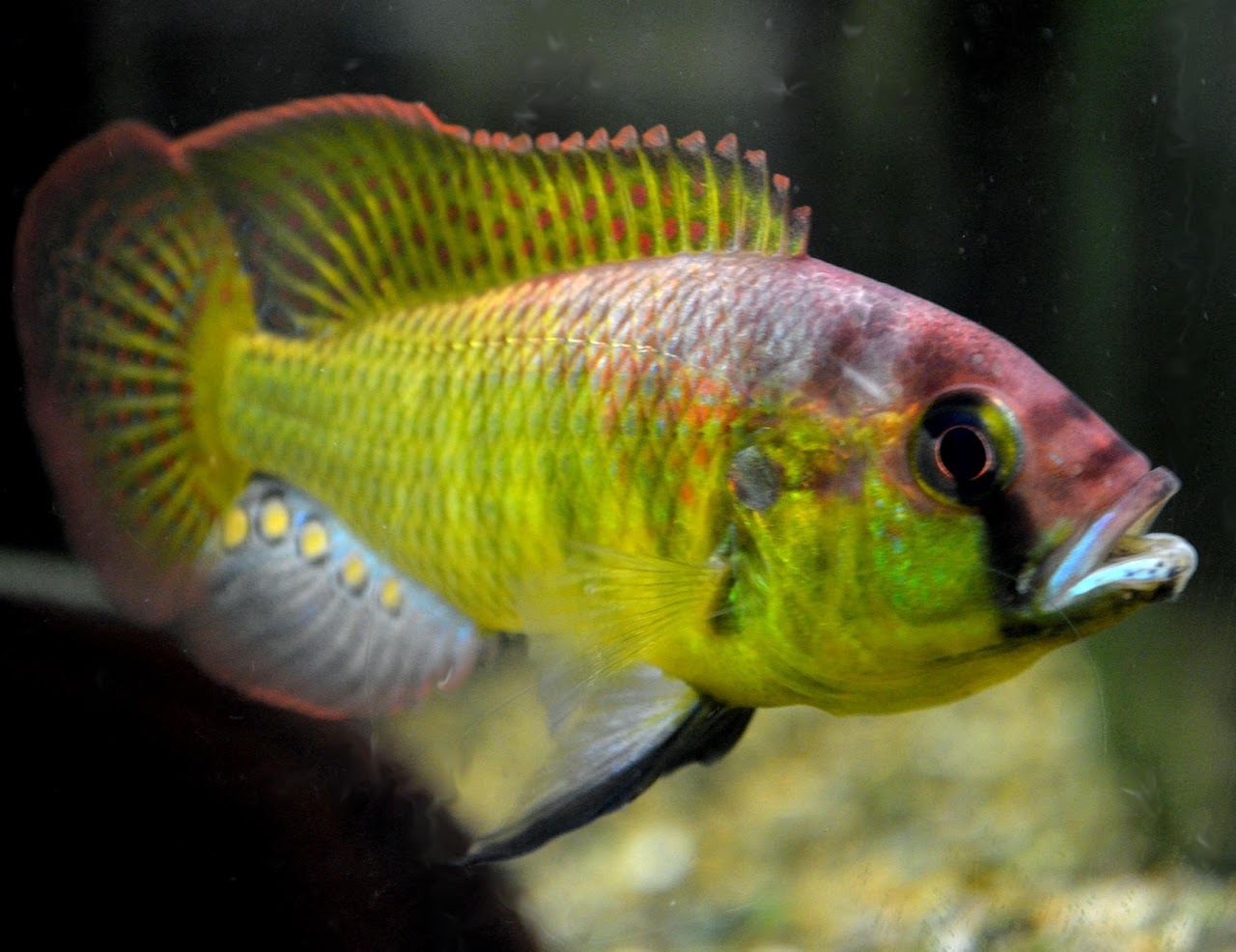
Dominant Male
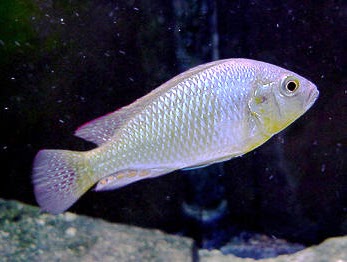
Subordinate Male
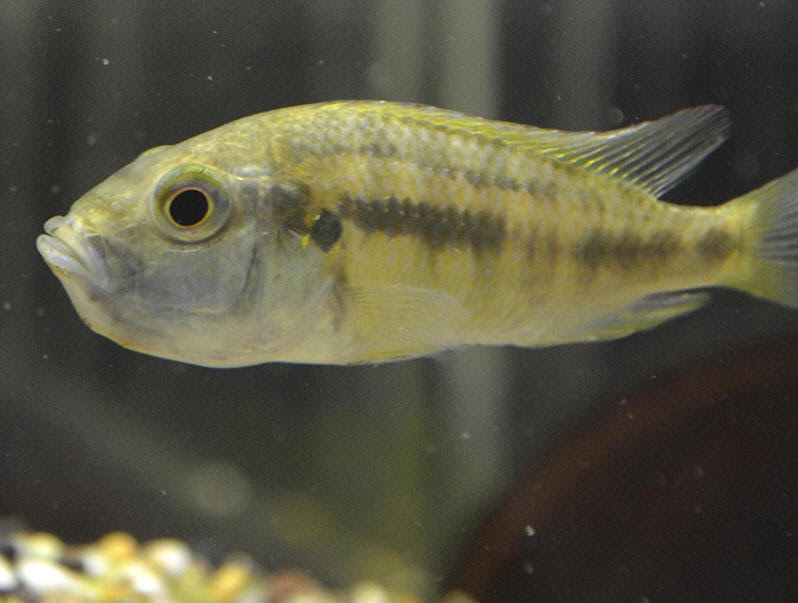
Mouth-brooding Female
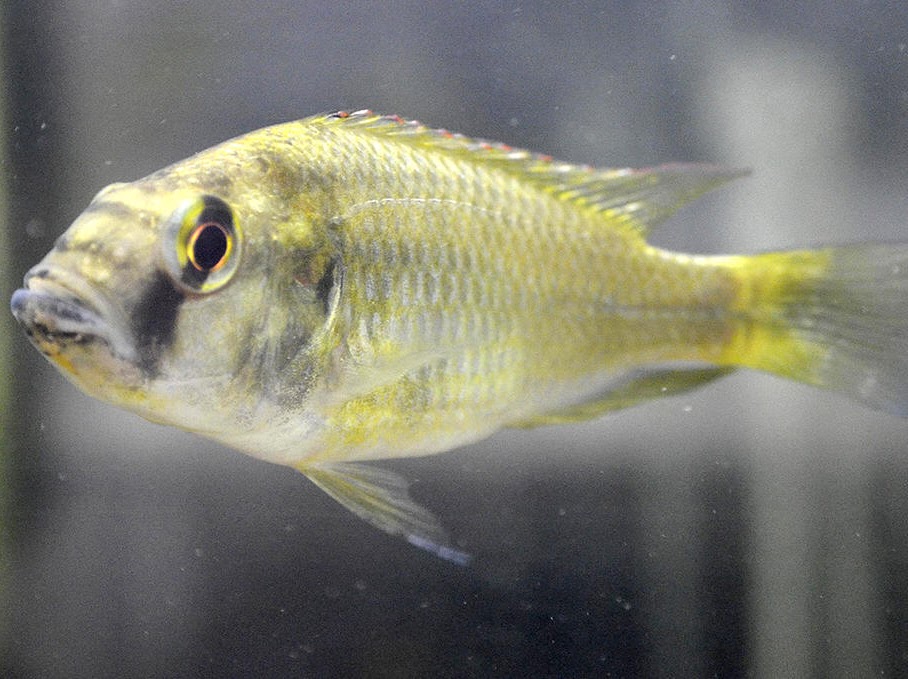
Gravid, Receptive Female
Spawning Behavior
Dominant males dig a pit in their territory to use as a spawning substrate, and spend
their time alternating between threat displays towards neighboring males, chasing
away subordinate males, and soliciting and courting females. When soliciting a receptive
gravid female, the dominant male will intensify his bright body coloration and perform
behavioral displays towards her in an attempt to lead her into his territory. He will
quiver his body, displaying his brightly colored anal fin in front of her while producing
a pulsed courtship sound, and will then use large exaggerated movements of his tail
as he turns and leads her back to the shelter. When a female follows, she will normally
be allowed to eat inside his territory, but may be chased out by the resident male
and return several times before deciding to spawn. If a female is sufficiently impressed
by the male, spawning will commence. Males will continue to swim vigorously in front
of the female, quivering their entire bodies with spread anal fins. If appropriately
stimulated, the female will deposit her eggs in the territory pit (egg-laying) and
then immediately collect them in her mouth (egg-uptake). The male then swims in front
of her, tilts to one side, and displays his anal fin on the substrate in front of
her to showcase the bright orange-yellow egg-spots. These egg-spots appear to the
female like some of her eggs not yet collected, and while she nips at the spots in
an attempt to pick them up, the male ejects milt to fertilize the eggs inside her
mouth (fertilization). During this time, subordinate males may also try to swim between
the spawning pair in an attempt to sneak fertilize the females eggs. The spawning
male may therefore repeatedly interrupt his courtship and mating to chase off intruders.
After several bouts of egg laying and fertilization, the female departs with fertilized
eggs which she broods inside her mouth for ~2 weeks until she releases them as free-swimming
miniature fish.

Social Communication
With their bright coloration and flashy behavioral displays, most cichlids, including
A. burtoni, rely heavily on visual communication during both male-male and male-female interactions.
However, we have recently shown that acoustic and chemosensory communication are also
important. For example, dominant males produce pulsed courtship sounds (left) during
quivering behaviors to complement the visual signals. Females are attracted to these
sounds and have better hearing when they are in the gravid receptive phase of their
reproductive cycle. Dominant males will also increase their rate of urine release
(right) when they are exposed to other dominant males, and receptive females, but
not mouth-brooding females. These studies suggest that social communication in this
species is certainly multimodal, but little is known about how these different signals
are used. One goal of our research program is to understand the relative importance
of these different sensory signals and how they contribute to context-specific behaviors
from both signaler and receiver perspectives.
